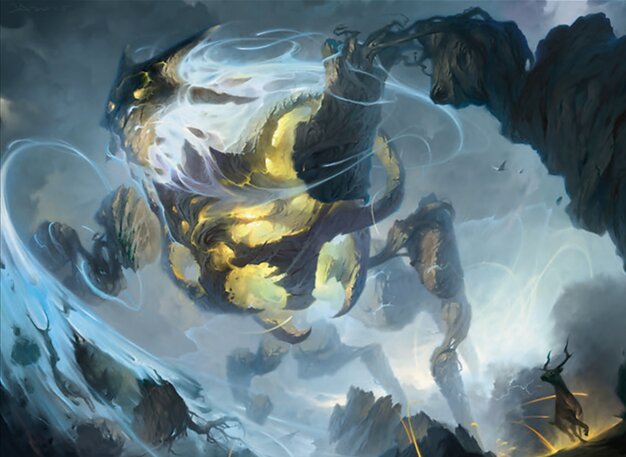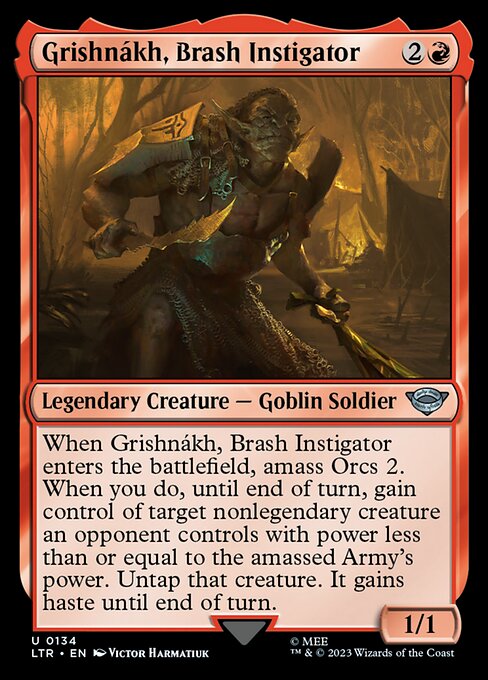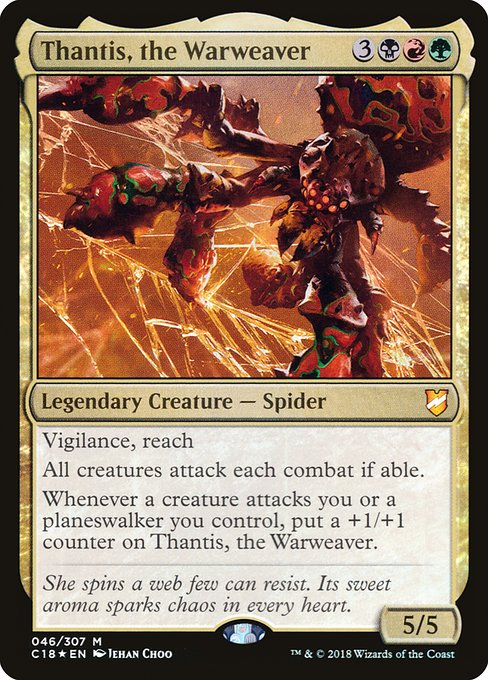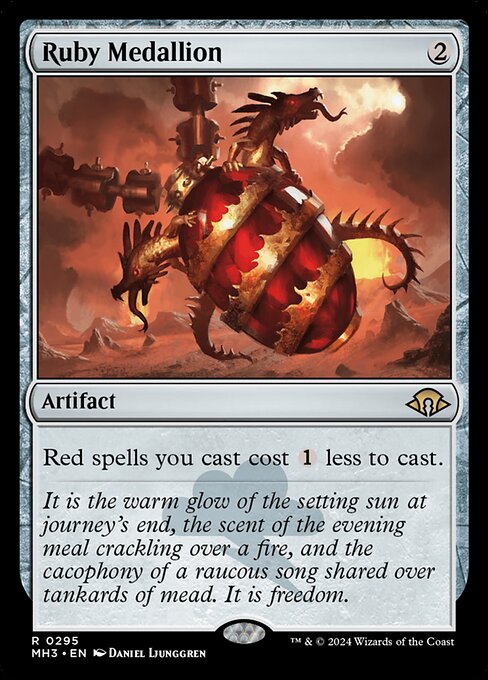Deck & Commander Strategies

Teysa, Orzhov Scion
Utilizes sacrifice and aristocrat synergies to generate value and life gain, aiming to control the board by making opponents sacrifice creatures while capitalizing on death triggers.

Maelstrom Wanderer
Focuses on cascade mechanics to cast multiple powerful creatures efficiently, ramping quickly to generate a large board presence and overwhelm opponents with big threats.

Thantis, the Warweaver
Builds around a spider tribal theme, going wide with many small creatures and using Thantis’s forced attack ability to clear combat paths and protect its swarm with blockers.

Grishnákh, Brash Instigator
Leverages amassing orc tokens and steals opponent creatures with Grishnákh’s ability, attacking aggressively with a horde of orcs and other stolen creatures to dominate the battlefield.
Gameplay Insights
- 1
Grishnákh’s ability to amass orcs and steal non-legendary creatures with power less than or equal to the amassed army’s power proved impactful in shifting board control and applying combat pressure.
- 2
Maelstrom Wanderer's cascade mechanic accelerated board development but was temporarily hindered when Grishnákh’s player destroyed the Sol Ring, disrupting ramp and cascade potential.
- 3
Teysa’s sacrifice and aristocrat synergies were positioned to generate incremental value, but she needed to find reliable sacrifice outlets to maximize effectiveness.
- 4
Thantis’s forced attack ability synergized well with a wide spider board, aiming to break stalemates by compelling opponents to attack into blockers, though the small toughness of spiders required careful protection.
- 5
Early removal and strategic blocking, such as sacrificing the Flame-Kin Harbinger to Grishnákh, demonstrated the importance of tactical creature trades and combat decisions to slow opponents while advancing one’s own board state.
Notable Cards
-

Grishnákh, Brash Instigator
-

Maelstrom Wanderer
-

Teysa, Orzhov Scion
-

Thantis, the Warweaver
-

Ruby Medallion
-

Arcane Signet
-

Ash Barrens
Gameplay Summary
The game started with each player setting up their board with a focus on their respective strategies.
Teysa, Orzhov Scion, aimed to leverage aristocrat-style sacrifice synergies and life gain to generate value.
Maelstrom Wanderer’s player prioritized a cascade-focused deck, ramping early with mana rocks like Sol Ring and casting creatures with cascade triggers to flood the board with powerful threats.
Thantis, the Warweaver’s player built around a spider tribal theme, trying to go wide with many small creatures boosted by forcing opponents to attack, while relying on blockers to survive combats.
Grishnákh, Brash Instigator’s player used an orc-themed deck focused on amassing orc tokens and stealing opponents’ creatures with Grishnákh’s ability, generating an aggressive horde for combat pressure. Early skirmishes involved Grishnákh stealing a Menace Skeleton token and attacking with it, maintaining pressure on the other players.
Cascade triggers from Maelstrom Wanderer accelerated board presence with big threats, while Teysa worked on setting up sacrifice outlets.
Thantis tried to stabilize with spider tokens and combat tricks but faced challenges as Grishnákh’s ability to take control of creatures disrupted the board state.
A key moment was the disenchanting of Maelstrom Wanderer’s Sol Ring by Grishnákh’s player, slowing down cascade potential and ramp acceleration.
The game was shaping up with multiple board states in flux as players jockeyed for position through creature theft, sacrifice synergies, and cascade-fueled threats, with the win condition revolving around overwhelming opponents either through aristocrat combos, cascade value, spider swarm defense, or an orc army led by Grishnákh.























![Commander Versus Series: Momir v. Gwafa v. Marrow-Gnawer v. Maelstrom Wanderer [MTG Multiplayer] thumbnail](https://i.ytimg.com/vi/WdlHQqhXgtU/sddefault.jpg)









